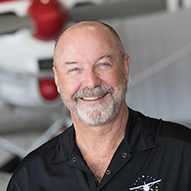Training and Safety Tip: Solving the cross-country conundrum
Many primary flight students struggle at some point with the definition of what a cross-country flight is, how it relates to meeting the requirements of the private pilot certificate, and whether it is already documented in their logbook or still needs to be met.
Fortunately, the FAA provides clarity. The specifics of the cross-country flight requirements can be found in two parts, both of which fall under FAR 61.109.
The second requirement generally refers to solo daylight cross-country flights, although the daylight aspect is not mandated. At least five hours of solo cross-country time must be logged with one of those cross-country flights totaling 150 nautical miles and full stop landings at three points. Additionally, one of those legs has to include a straight-line distance of more than 50 nautical miles, so make sure at least two of those landing spots distance more than 50 nautical miles from each other.
Here is where much of the confusion comes into play: Cross-country flights have a different definition for pilots who are already certificated. This can cause some student pilots to misunderstand what is required of them. While a commercial pilot can fly from their home base to another airport 28 nautical miles away and count it as a cross-country flight, a student pilot cannot.
Understanding the specific cross-country time and distance requirements for a student pilot can make all the difference between showing up at your practical test with the confidence that you’ve met the FAA’s requirements, or being sent home without completing the test because you haven’t yet met the requirements.
Talk to your CFI. Make sure you’re both on the same page with your dual and solo cross-country flights and that they meet the FAA requirements completely. That short conversation and some careful flight planning can save you time, money, and frustration throughout your training. Guaranteed.



